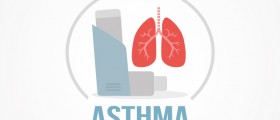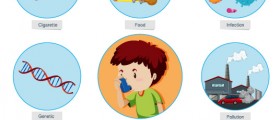
Asthma is a respiratory illness characterized by constriction of the airways and production of viscous mucus both of which are responsible for shortness of breath. The condition can be mild, moderate or severe and the attacks may occur rarely or frequently.
It is estimated that severe asthma in children represents the third most common cause of hospitalization and is actually the most common cause of pediatric ICU (intensive care unit) admission. In adults severe asthma affects approximately 5-10% of all sufferers and due to frequent attacks is considered quite costly.Status Asthmaticus
Status asthmaticus is a medical emergency. During the attack symptoms are refractory to initial bronchodilator therapy. Due to that resulting respiratory failure leads to hypoxia (lack of oxygen), carbon dioxide retention and acidosis.
Even though scientists have not managed to identify the actual mechanisms of status asthmaticus, it is known that it can have gradual and sudden onset. Approximately 80% of severe attacks develop within 48 hours while sudden onset develops mostly due to significant allergen exposure. Sudden onset is also frequent among older patients.
Unfortunately, in spite of many treatments, medical care may fail to treat acute severe asthma.
Clinical Characteristics
In patients suffering from status asthmaticus there is severe dyspnea which develops over hours or days. The attack is frequent among individuals who have undergone endotracheal intubation, mechanical ventilation, those with frequent emergency department visits and patients who use systemic corticosteroids.
During examination doctors confirm tachypnea (early stage of the attack) and significant wheezing. In the beginning wheezing occurs only during expiration while later it additionally affects the inspiratory phase as well.
Patient's chest is expanded and as bronchoconstriction gets worse, wheezing may disappear which points to serious airflow obstruction. Another indicator of severe airway obstruction is the pulsus paradoxus, the difference between systolic blood pressure during inspiration and expiration.
Treatment
The goal of the treatment is to bring bronchoconstriction and inflammation under control as soon as possible. There are many drugs doctors can use in order to help patients suffering from status asthmaticus.
Beta-2 agonists are the first line of therapy. Depending of the severity of the attack these drugs are administered continuously or by frequent timing. Nonselective beta-2 agonists are administered in patients who do not respond to initial treatment. These drugs are administered subcutaneously. Some patients may benefit from anticholinergics.
Oxygen therapy is always indicated. It is administered according to current oxygen saturation. Glucocorticosteroids are highly efficient drugs that may help individuals suffering from status asthmaticues. Additionally treatments include fluid replacement and antibiotics (given only if there is active infection).









,-Asthma-And-Anxiety_f_280x120.jpg)







Your thoughts on this
Loading...